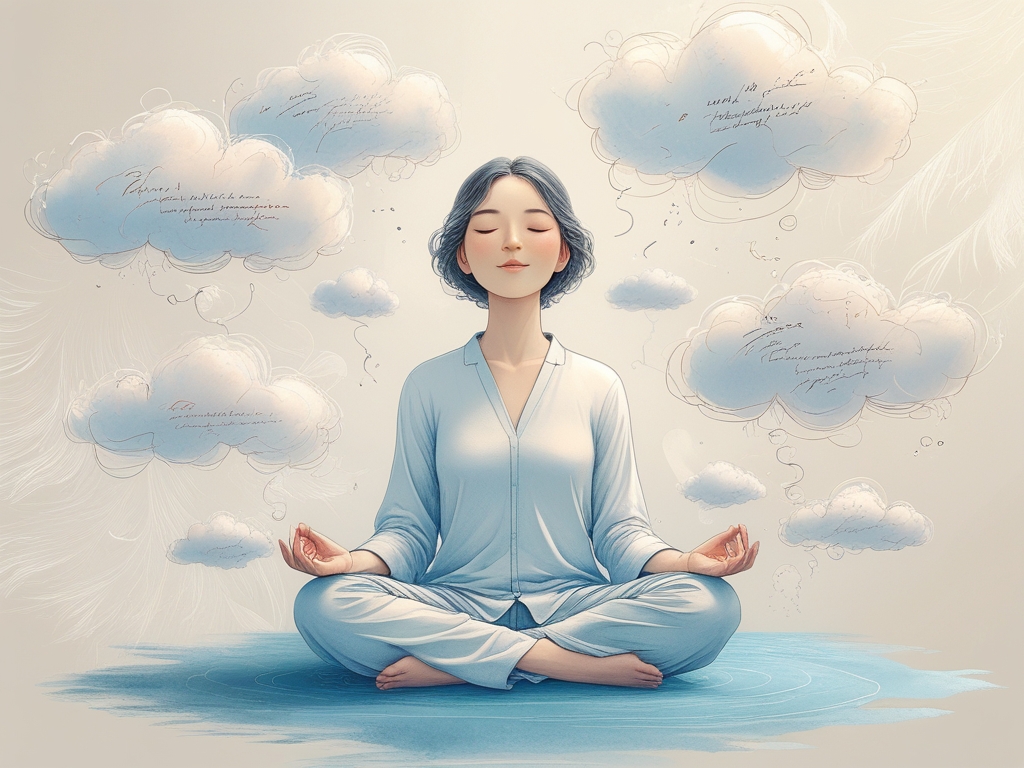Let's start with some honesty: meditation is hard.
Not because it's complicated or because you need to be able to twist your legs into a pretzel or chant in Sanskrit. No—it's hard because we're human. And our minds, bless them, like to do. They don't want to be quiet. They want to plan dinner, worry about your bank balance, rerun conversations from three years ago, and wonder if that one noise was a fox or just the fridge.
At the heart of meditation is something beautifully simple. It's the art of quieting the mind just enough that you can hear the gentle whispers of Spirit, of your soul, of whatever deeper knowing you believe is guiding you. And that starts with learning to sit, breathe, and be.
So let's begin with a short guided meditation—a friendly one. Nothing fancy. No incense required (though light it if you love it). All you need is a bit of time, and a willingness to try.

A Simple Guided Meditation for the First-Timer
(You might want to read this aloud in your own voice and record it on your phone. Hearing your own words will feel more personal and grounding.)
Begin recording:
Hello, me. I'm here to spend a few quiet minutes with myself. This is my time to pause the noise, to rest in stillness, and to remind myself that underneath it all—I'm okay.
Let's begin by sitting comfortably. Feet on the ground if you're in a chair. Spine relaxed but upright. Shoulders soft. Eyes can be open or gently closed.
Now take a breath in... slowly... and gently let it out.
Again... breathe in... and breathe out.
And as I sit here, I give myself permission to do nothing for the next few minutes. If thoughts come, that's fine. They're allowed. I'm not fighting them—I'm just noticing them. Like clouds floating across the sky.
If my mind wanders, that's okay too. Each time I notice it, I gently bring it back. Back to the breath. Back to this moment.
Breathing in calm...
Breathing out tension...
Breathing in stillness...
Breathing out noise...
I don't need to achieve anything here. I don't need to 'get it right.' The only thing I'm doing is sitting with myself. Being present. Listening.
Maybe, just maybe, there's something soft and quiet underneath the surface. A still, small voice. My spirit. My inner knowing. My connection to something greater.
I don't need to hear anything right now. Just knowing it's there is enough.
So I sit... I breathe... and I allow.
(Pause for 30 seconds of silence.)
Now, slowly, I bring my attention back to the room. Wiggle my fingers. Stretch if I need. And thank myself for showing up.
Well done, me.
End recording.

Why Meditation Feels So Hard (And Why That's Normal)
Here's something no one tells you when you're just starting: meditation isn't about having no thoughts. It's about not being ruled by them.
It's totally normal—expected, even—for your brain to start acting like it's been given an espresso and a microphone the moment you try to be still. It will remind you of shopping lists, embarrassing moments from school, and that one phone call you forgot to return.
That doesn't mean you're doing it wrong. It means you're human.
Think of your thoughts like a toddler having a sugar crash in a supermarket. You don't yell at them—you gently, lovingly guide them back. Again. And again. That's the practice.
And eventually, over time, something remarkable starts to happen. You'll get moments—just moments—of quiet. Of clarity. Of presence. That's when Spirit sneaks in.
What's the Point of Meditation, Anyway?
You might be thinking: okay, but what is this all for? Why sit in silence when the world is moving at 100mph?
When your mind is full of noise, it's hard to hear the deeper truths. The intuition. The nudges. The connection to something beyond the everyday.
Meditation is the tool that lets you tune in.
It's not about escaping life—it's about becoming more present to it.
More grounded. More attuned to that whispering voice that says: "You're on the right path," or "It's time to let go."
For those on a spiritual path, it's one of the most direct ways to listen to Spirit. You're not asking for signs, cards, feathers, or clock times (though all those are welcome)—you're learning to listen to the quiet voice within.

Creating Your Own Meditation (In Your Own Words)
Now here's the empowering part. Once you've done a few guided meditations and know the rhythm, you'll realise something: you don't need a guru or an app. You need you.
Your words. Your tone. Your truth.
So here's how to create your own personal meditation:
1. Begin with an Intention
What do you want this meditation to offer? Peace? Clarity? Connection? Choose a single word or phrase. Maybe it's "listen to Spirit" or "calm my mind" or "open my heart."
2. Write Like You're Talking to a Friend
Speak gently, with kindness. You're not barking orders. You're guiding yourself back to stillness. Use your natural voice. You might say:
"Okay, me. Let's take a breath. Let's remember we're safe, we're loved, and we don't need to solve everything today."
3. Include Breath Awareness
The breath is your anchor. It's always there. Include lines like:
"Breathe in light... breathe out tension."
"Let each breath bring you back."
4. Use Reassurance
Acknowledge that the mind may wander. Say:
"It's okay if you're thinking. Just come back when you're ready. No judgment."
5. Include Moments of Stillness
Leave space in your recording. Let silence do the talking. A few 30-second pauses go a long way.
6. End With Gratitude
"Thank you for showing up. You're doing better than you think."
Once it's written, record it. You don't need a studio—your phone will do. Hearing your own voice reassuring you in a moment of chaos is strangely powerful. It grounds you. It reminds you that you can access calm anytime, anywhere.

Final Thoughts: Meditation Is a Relationship
Meditation isn't a one-off trick. It's a relationship with your own mind—and by extension, with Spirit.
At first, it might feel awkward, frustrating, or even pointless. But over time, it becomes a sanctuary. A place you can visit every day, even for five minutes, to reconnect with yourself and what really matters.
And remember: some days will be noisy. That's okay. The point isn't perfection. The point is showing up. Letting your spirit know you're listening.
And who knows? Maybe one quiet morning, in the stillness between breaths, you'll hear something. A whisper. A knowing. A truth you've always known but had forgotten how to feel.
That's the magic of meditation. And it begins with you, today, right now.
Now go on—record your voice. You've got this.
